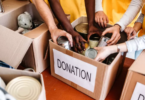How to Make Sure You’re Covered for Natural Disasters
Natural disasters can strike with little warning, leaving destruction in their wake and potentially devastating your financial security. From hurricanes and floods to earthquakes and wildfires, understanding how to ensure you’re adequately covered for these unpredictable events is essential. In this article, we’ll explore the steps you can take to safeguard your home and finances against natural disasters.
Understanding Natural Disaster Insurance
Natural disaster insurance refers to various policies designed to cover damages caused by specific catastrophic events. Traditional homeowners insurance often excludes certain disasters, so it’s crucial to understand what your current policy covers and what additional coverage you might need.
Key Types of Natural Disaster Insurance
- Flood Insurance: This type of insurance is vital if you live in an area prone to flooding. Standard homeowners insurance typically does not cover flood damage. Flood insurance is available through the National Flood Insurance Program (NFIP) or private insurers.
- Earthquake Insurance: Like flood insurance, earthquake coverage is usually not included in standard homeowners policies. It protects against damages caused by seismic activity. Depending on your location, this could be a crucial addition to your insurance portfolio.
- Hurricane Insurance: In hurricane-prone regions, homeowners should ensure their policies cover wind and storm damage. Some insurers may have specific hurricane deductibles, which can be higher than standard deductibles.
- Wildfire Insurance: If you live in a fire-prone area, consider specific wildfire insurance. This coverage helps pay for damages caused by wildfires, which can quickly devastate homes and properties.
- Tornado Insurance: While tornado damage may fall under your standard homeowners insurance, some areas offer additional policies specifically for tornado-related destruction.
Steps to Ensure Adequate Coverage
1. Review Your Current Insurance Policy
Start by thoroughly reviewing your existing homeowners or renters insurance policy. Pay close attention to the following:
- Coverage Limits: Ensure that the limits are high enough to cover the replacement costs of your home and personal belongings.
- Exclusions: Identify any exclusions related to natural disasters, such as floods or earthquakes, and determine what additional coverage you may need.
2. Assess Your Risk
Understanding the specific natural disasters that could affect your area is essential in determining the right coverage. Research historical data on disasters in your region, such as:
- Flood zones
- Earthquake fault lines
- Hurricane paths
- Wildfire-prone areas
Consider speaking with local authorities or emergency management agencies to gather additional information.
3. Determine the Right Coverage
Once you’ve assessed your risks, consider the appropriate types of insurance for your situation. You may need to purchase additional policies or riders to ensure comprehensive coverage:
- Flood and Earthquake Insurance: If you live in a flood or earthquake zone, prioritize acquiring these policies.
- Replacement Cost Coverage: Choose replacement cost coverage instead of actual cash value to ensure you can fully rebuild or replace your home and belongings without depreciation deductions.
4. Shop Around for Insurance
Not all insurance companies offer the same coverage or rates. Take the time to shop around and compare quotes from various insurers. Look for:
- Comprehensive coverage options
- Affordable premiums
- Strong customer service ratings
- Good financial stability ratings
5. Understand Deductibles
Different types of insurance have various deductible amounts. When considering natural disaster coverage, be aware of:
- Standard Deductibles: The amount you pay out of pocket before your insurance kicks in.
- Catastrophic Deductibles: Some policies, especially for hurricanes or earthquakes, may have higher deductibles based on a percentage of your home’s value. Understand how this will affect your financial planning in the event of a disaster.
6. Keep Your Policy Updated
As your life changes, your insurance needs may also change. Regularly review and update your policy to reflect:
- Changes in your home’s value or improvements
- New risks based on your location or lifestyle
- Changes in family status, such as having children or acquiring new assets
7. Create an Emergency Plan
Insurance is just one part of disaster preparedness. Develop a comprehensive emergency plan that includes:
- Evacuation Routes: Know how to get out of your area quickly and safely in case of a disaster.
- Emergency Kit: Prepare a kit with essential supplies, including food, water, medications, and important documents.
- Communication Plan: Establish a plan to communicate with family members during a disaster, including designated meeting points and contact information.
Conclusion
Natural disasters can have catastrophic effects on your home and finances, making it essential to ensure you have the right insurance coverage in place. By understanding the risks, reviewing your current policies, and obtaining necessary additional coverage, you can protect yourself from financial ruin in the event of a disaster.
Regularly assess your needs, shop for the best policies, and develop a comprehensive emergency plan to enhance your preparedness. With the right measures in place, you can navigate the uncertainties of natural disasters with greater confidence and peace of mind.







Leave a Comment